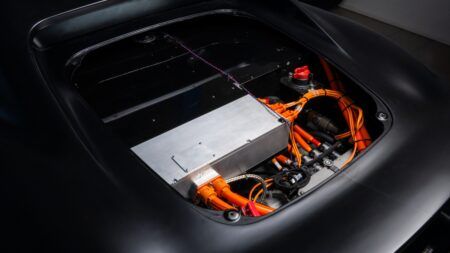EV charging consultancy, Versinetic, has released its Essential Guide to Designing Electric Vehicle Charging Systems. Against the background of a growing electric vehicle market, Versinetic provides an overview of the steps required to develop a smart EV charging system and network.
As the space for another off-the-shelf white box charger is limited, and charging systems are a significant investment, an innovative approach is important. For some companies the differentiator will be more about their route to market than the product itself.
The guide starts by exploring the two main types of EV charger: destination and en-route and the challenges and pitfalls around their design.
With a deep dive around target markets, from consumers to fleet, and considerations that need to be made when targeting either, the guide also explores the cheaper domestic charging market vs demand for commercial charging systems.
Versinetic also touches upon compliance as Electric Vehicle Supply Equipment (EVSE) standards vary by country, with many having their own wiring regulations stipulating how mains equipment is connected to the grid
The guide delves into the physical elements of the charge point: the casing, the cabling and the electronics. When designing these aspects, developers need to focus on longevity. Customers, regardless whether they are businesses or individuals, will expect EV chargers to last for years, with minimal maintenance. For each element, Versinetic explores different options from wall boxes to standing units to size and aesthetics for casing; and different connector types including untethered and tethered cabling; to boards, communications and thermal control for electronics teams.
Software is a key component of any successful charger and Versinetic details EV charger software blocks, including IEC 61851, the most basic communications protocol used in Type 1 and 2 AC charging systems between the charger and the vehicle. It also looks at OCPP, a global standard for charger communication with a back office, created by the Open Charge Alliance (OCA).
Additional technologies to add to a charging solution are considered, such as using 3-phase power, whether AC is even an option or DC chargers should conform to CHAdeMO, CCS and/or Tesla. The guide even explores the new Chinese standard ChaoJi, which is capable of charging at a power greater than 500kW, and is backwards compatible to CHAdeMO, CCS, and GB/T standards.
Versinetic also identifies how in the not-too-distant future, more and more of the world will be powered by renewable resources. In particular, some EV charging networks are now partially powering their solutions using Solar PV and how potential markets can be increased if a solution is provisioned to use solar energy and other renewable sources.
Dunstan Power, Director, of Versinetic said: “Through the proliferation of initiatives to combat climate change worldwide, it’s clear electric vehicles and greener transport systems are the future. However, the excitement at the opportunity afforded by the dynamic, fast-moving e-mobility market must be tempered with a careful, methodical approach to planning, development and delivery of your EV charging solution.
“Our guide will hopefully provide some insight into some of the complexities of creating an EVSE. Whether you work with your own development team or an EV charging design consultancy like Versinetic, having a clear USP and target market and being vigilant with your project and production management will give you a great foundation for a successful route to market.”
Read the full guide here: https://versinetic.com/essential-guide-designing-ev-charging-system/





